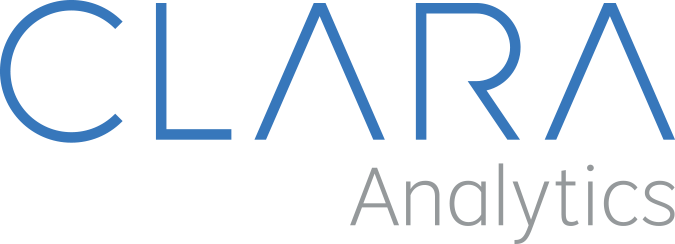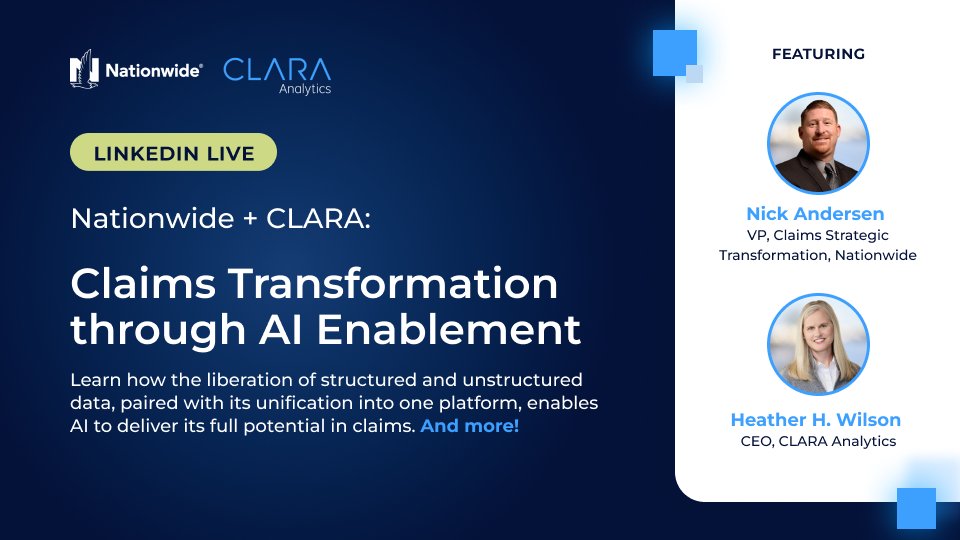CLARA Claims Document Intelligence Pro, formerly CLARA Optics: A Big Step Forward in Claim Automation
I’ve been hearing about claims automation for nearly ten years now, and it doesn’t seem like many carriers, TPAs, or self-insureds are very close to attaining it. It’s not for a lack of trying. Billions have been spent on new claim systems, systems integration, business rule engines, data and analytics, and more. What’s been lacking are well thought-out and effective strategies for automating. Big vision is in abundance. Tangible results are few and far between.
Companies that I am familiar with have failed because they tried to “swallow the elephant”, meaning they set out to automate much, or everything, at once. It’s only in hindsight that they realize one has to eat an elephant one bite at a time. I don’t recommend eating elephants, but if claim automation is your objective, taking the “a few bites at a time” approach raises your chances of success greatly.
Automation use cases designed to deliver useful, and selective, improvements in specific areas of claims handling efficiency is the way to get started. Don’t be in a hurry to chose your use cases though. Chief claim officers, claim managers, and frontline adjusters all have lists of pet projects they each want addressed once the automation train pulls into the station. These may, or may not be, your best candidates.
Better to brainstorm a whole bunch of potential use cases making sure to involve people from technology, data and data science, finance, and quality improvement in the process. Why? Because to succeed your use cases must meet some criteria you’ll need their buy-in on. Namely: Can your technology evolve fast enough to make the use case feasible? Does the quality of your data support decisioning without human oversight? Can data and the output of AI models be delivered to the decision point at the right time? Can models whose predictions are nearly flawless be built and maintained? And most importantly, is the cost of building and implementing all this deliver large returns on investment? Once you’ve thought broadly and inclusively at first, evaluated your ideas on these criteria, and ranked them by potential return weighted by potential success, are you ready to go.
At CLARA Analytics, we spend a lot of time sitting in our customers’ chairs. Finding Nirvana for us is building a capability or product that delivers big, big returns to our clients. And while we are an artificial intelligence company, we don’t use AI as a hammer in search of nails. We use our deep insurance experience to think through where in the claims value chain there are big opportunities for efficiency gains and then ask ourselves how AI can help solve the problem.
CLARA Claims Document Intelligence Pro Automates a Highly Manual Process
Case in point: our latest product, CLARA Claims Document Intelligence Pro (Claims DocIntel Pro). Claims DocIntel Pro automates a highly manual process, that of identifying insights in claim documents as they are added to a claim file, and organizing the docs in a longitudinal and searchable manner. That doesn’t sound very sexy, but implementing Claims DocIntel Pro solves a very costly and time consuming problem. Point to remember: AI doesn’t have to be flashy or sexy to deliver Big Bang for the buck. In my experience it’s the “back office” type of use cases that Claims DocIntel Pro addresses which are your best initial bets.
Many of the carriers we’ve shown Claims DocIntel Pro to, and especially those who have already purchased it, have in place whole teams of people who do nothing but review documents, highlight and classify relevant facts and place the results in an adjuster’s digital claim file. At one company I am familiar with the folks doing this repetitive work that fill a large room and make $100k+ a piece!
CLARA Claims Document Intelligence Pro Organizes Documents Within the Claim Context
CLARA Claims Document Intelligence Pro scans and standardizes documents of all types, from HICFA forms to medical bills and everything in between. It then identifies, in the context of each claim and it’s history, key pieces of new information that the adjuster needs to know about immediately. If an injured worker is being treated for a broken leg and all of a sudden neurological treatment codes start appearing, that’s information which needs to be acted on quickly as it signals an added, and potentially costly, layer of complexity to the claim.
Another high-value added capability of Claims DocIntel Pro is organizing, connecting and cross-referencing all documents in large and complex claims. When a claim file is handed from one person to the next because the original adjuster has left, or a team of specialists is now needed, these steps are essential and need to be completed quickly. Companies we’ve talked to often send these claim files out to a servicer, hoping for turnaround within weeks. Claims DocIntel Pro does all this overnight. Internally. Automatically.
Our other core products: CLARA Triage, CLARA Treatment, and CLARA Litigation deliver other aspects of insight and intelligence that claims automation requires. I’ll write more about them and the journey toward claims automation in future posts. But remember, if you are looking for a Great Leap Forward on your automation journey, give us a call to learn if CLARA Claims Document Intelligence Pro is for you.
Low IT lift. Up and running in weeks not months or years. AI as a service with a track record of success behind it.
Contact us for a demo and start seeing the power of augmented intelligence for your claims operation.




